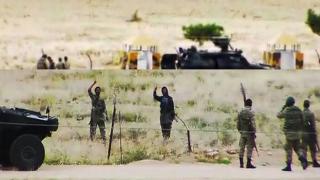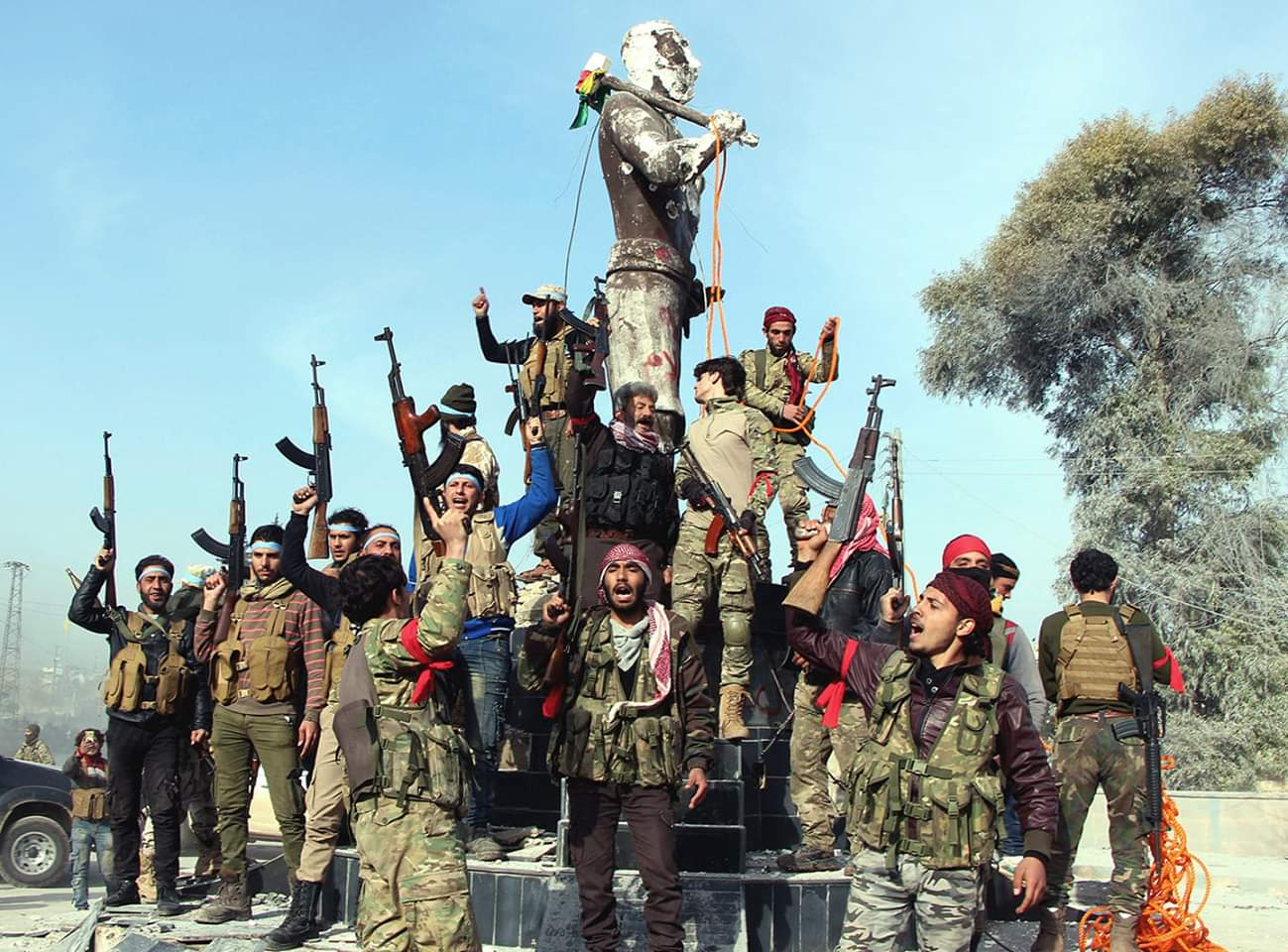Local sources in the city of Afrin, which is controlled by armed groups backed by Turkey, reported that unknown persons burned a religious shrine of the Yezidis after stealing its contents, last night in a field plains in Raju district, northwest of Aleppo.
According to the testimonies, unknown persons vandalized the shrine called “Bint Al Hassan” in the Sahel Medaniat area, in the middle of a cemetery. Surrounded by oak trees. The site contains huge archaeological stone pillars spread, reminiscent of the Roman and Byzantine buildings, and then they burned them. On the door of the shrine, an Ottoman inscription dating back to the year 1300 AH / 1882 CE has been engraved, and the maqam owner is (Sheikmus Anzali). About the name (Anzali): There are seven Sanjid (banners) for the Yazidis, each of which symbolizes an angel, the greatest of them is the sanjak (al-Anzal), and al-Anzali from Sheikh Ibrahim Al-Anzali, one of the sheikhs of the Yazidis. Perhaps Sheikhmus was called al-Anzali, because he was a follower of Sheikh Ibrahim al-Anzali.
The area is controlled by gunmen from the militia (Legion of the Levant), whose elements had posted videos and photos a few days ago with statements that a center of polytheism in God and infidelity and delusion to be burned later. Afrin was crowded with “holy” shrines and religious places, and there may be more than one shrine in some villages, symbolizing it. By an ancient archaeological building, or a house at the edge of the village, it may be a large rock next to a water source, or an old archaeological site believed to be a pond or a tree. It is spread over the mountains surrounded by a group of trees, or a large tree, and in the middle of the fields or in the barren mountains or the foothills of mountains and valleys where the old trees around them shade. These shrines have special beliefs for people, whether it be for Muslims or Christians or Yezidis and others, they were places For worship, or a historical symbol of a well-known figure, and seeking to heal the sick or achieve the aspirations is sought on its doorstep. Some even burn candles and oil lamps on Friday nights, as it is not permissible to leave the shrine without lighting that night. It is not excluded that these rituals have anything to do with setting fire to Zoroastrian temples. And often the shrines are next to a cemetery, with shrines in the form of graves that people bless, representing the shrine of one of the righteous. Here we will review the most important public shrines known in the region. We mention a number of those centers that were subject to looting, looting, burning and destruction after the control of the Turkish army and the Syrian armed opposition groups:
shrine Hanan
The shrine of Hanan or Abdel Hanan is to the south of the village (Mashaala), next to the main road Aleppo – Afrin, and it is a well-known shrine among the residents of the area.
The basic old building for visiting Hanan was small, with a mausoleum. In 1964, the late Dr. Nuri Darsmi expanded its building, built its beacons, surrounded it with a wall and turned it into a mosque, and prepared for himself and his wife two graves inside the wall, and we were buried there after their death.


